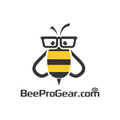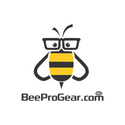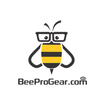
Honey bee health and productivity are heavily influenced by their diet, which needs to meet the colony's dynamic nutritional requirements. As these superorganisms navigate seasonal challenges and forage limitations, beekeepers play a vital role in ensuring their colonies have access to the necessary nutrients through supplemental feeding. This guide explores the importance of macronutrients and micronutrients, effective feeding strategies, and innovative practices to enhance honey bee nutrition.
Understanding Macro and Micronutrients
Honey bees require a diverse range of nutrients for optimal growth and development. These can be divided into macronutrients—proteins, carbohydrates, and lipids—and micronutrients, such as vitamins, minerals, and phytosterols.
Proteins
Proteins are crucial for brood production, with pollen being the primary natural source. A colony of 50,000 honey bees can consume around 312.5 pounds of pollen annually. While natural pollen is nutritionally superior, pollen supplements and substitutes can provide essential amino acids when natural sources are scarce. Ideally, diets should contain 23-30% crude protein. This ensures the "diet of a honey bee" meets their growth demands.
Lipids
Lipids, including omega-3 and omega-6 fatty acids, play a critical role in improving honey bee learning and foraging behaviors. Supplemental diets should contain 5-8% lipids for balanced nutrition. Adding these components aligns with "beehive nutrition" standards.
Micronutrients
Micronutrients like phytosterols, vitamins, and salts are vital for longevity, immunity, and brood rearing. For instance, phytosterols from pollen enhance honey bee health, while salts contribute to their physiological needs. However, excessive sodium or calcium can be toxic, a factor often overlooked in "bee health reviews."
Carbohydrates: The Colony’s Energy Source
Carbohydrates, primarily derived from nectar, fuel honey bee activities. When natural nectar is insufficient, beekeepers can provide sugar supplements. A typical colony may require over 700 pounds of nectar annually. Sugar syrups, fondants, and granules are common supplemental feeding options, but care must be taken to avoid toxins like hydroxymethylfurfural (HMF), which forms during improper storage. Using "honey bee supplements" wisely can prevent such risks.
Supplemental Feeding Strategies
Supplemental feeding bridges nutritional gaps caused by seasonal or environmental forage shortages. The type and amount of feed depend on colony status, regional climate, and management goals.
Protein Feeding
-
Spring: High-protein diets stimulate brood production and strengthen colonies for pollination. Pollen-based patties are preferable but substitutes can suffice when natural forage is unavailable.
-
Fall: Feeding protein helps bolster diutinus bees for overwintering. In warmer regions, pollen-based supplements can sustain brood production through winter.
-
Winter: Protein feeding is generally unnecessary, as colonies focus on conserving energy rather than brood rearing. Supplementation aligns with "honey bee diet" requirements.
Carbohydrate Feeding
-
Spring: 1:1 sugar syrup helps colonies build comb and prepare for brood rearing.
-
Fall: Thicker 2:1 syrup supports overwintering preparations, ensuring colonies have sufficient reserves.
-
Winter: Dry sugar or fondant can be provided as emergency feed in colder regions.
Innovations in Supplemental Feeding
Beekeepers are exploring probiotics and prebiotics to enhance colony health. Probiotic formulations containing honey bee gut bacteria show promise in improving brood production and immunity. Similarly, prebiotics like yeast-derived β-glucan can reduce virus infections and enhance resistance to pathogens. The integration of "nutrition for honey bees" is evolving.
Insights from Commercial Beekeepers
Interviews with commercial beekeepers across the United States reveal diverse supplemental feeding practices tailored to regional conditions and colony goals. For example, "honey bee health coalition" initiatives highlight strategies for adaptive feeding.
Gaps in Honey Bee Nutrition Research
Despite advancements, several questions remain unanswered and require further research:
-
How effectively do artificial diets convert into brood food?
-
What are the long-term benefits of supplemental feeding on colony health and productivity?
-
Can sterilized pollen retain its nutritional value?
We will discuss these topics briefly in our upcoming blogs.
Conclusion
Honey bee nutrition is a complex, multifaceted challenge that requires adaptive management. By combining well-formulated supplemental feeds with natural forage strategies, beekeepers can ensure their colonies thrive. As research continues, the potential to refine supplemental diets and understand their impacts on honey bee health holds promise for the future of sustainable beekeeping. Proper attention to "bee supplements" and "hive nutrition" can significantly improve outcomes.


